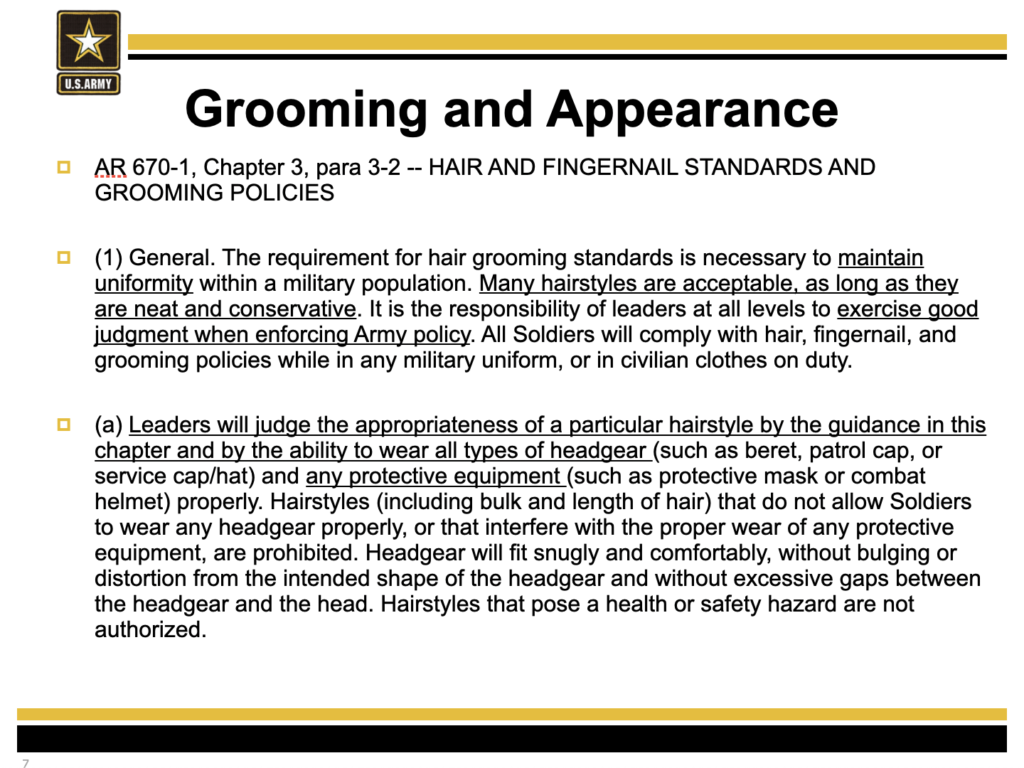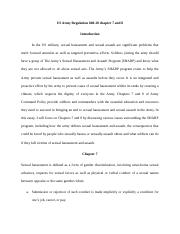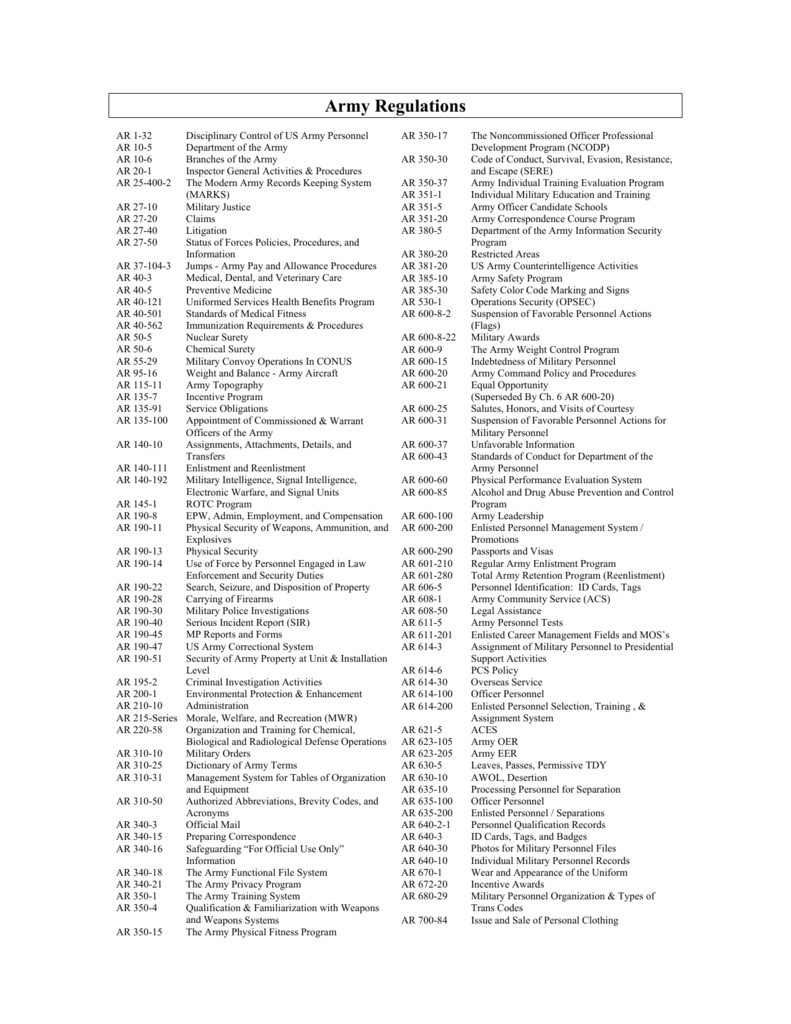Army Regulation 700-142 : What it is
Army Regulation 700-142: What It Is and How It Impacts You Introduction: Army Regulation 700-142, also known as AR 700-142, is a crucial military regulation that governs the proper management, accountability, and control of ammunition and explosives within the United States Army. This regulation ensures the safety of personnel and facilities by outlining the procedures and requirements for the storage, transportation, handling, and use of ammunition. In this post, we will provide an overview of AR 700-142 and its significance, discussing key points in a friendly and accessible tone. Subheading 1: Understanding AR 700-142 Under this subheading, we will discuss the main aspects and purpose of AR 700-142. We will cover topics such as the importance of ammunition control, the responsibilities of personnel involved, and the potential consequences of non-compliance. By providing a clear and concise explanation, readers will gain a better understanding of why this regulation is crucial for the safety and effectiveness of the Army. Subheading 2: Key Requirements of AR 700-142 In this section, we will delve into the specific requirements outlined in AR 700-142. Topics to be covered may include storage considerations, such as proper types of containers, environmental controls, and access restrictions. We will also touch upon transportation guidelines, documenting procedures, and conducting regular inventories to ensure accountability. By discussing these requirements, readers will gain insights into the meticulous processes implemented to maintain the safety and integrity of ammunition and explosives. Subheading 3: Ensuring Compliance with AR 700-142 Under this subheading, we will discuss the steps that Army personnel should take to ensure compliance with AR 700-142. We will provide practical tips and recommendations, including the importance of proper training, the role of supervisors in enforcing the regulation, and resources available to assist in understanding and meeting the requirements. By presenting this information, readers will have a clearer understanding of their responsibilities and how to remain compliant with AR 700-142. Subheading 4: Frequently Asked Questions (FAQ) about AR 700-142 In this section, we will address some of the common questions and concerns that individuals may have regarding AR 700-142. We will provide answers to questions such as: 1. What are the consequences of non-compliance with AR 700-142? 2. How often should ammunition inventories be conducted? 3. Can Army personnel transport ammunition in personal vehicles? 4. Are there any exceptions to the storage requirements in certain situations? 5. What should I do if I notice suspicious activity related to ammunition? By answering these frequently asked questions, readers will gain a deeper understanding of the regulation and how it impacts their daily activities and responsibilities within the Army. Listicle Examples: 1. Top 5 Best Practices for Ammo Storage According to AR 700-142 2. 7 Common Misconceptions about AR 700-142 and the Truth Behind Them 3. A Step-by-Step Guide to Conducting an Accurate Ammunition Inventory Conclusion: In this comprehensive post, we have explored the significance of Army Regulation 700-142 and its impact on ammunition and explosive management within the United States Army. By understanding the main aspects, requirements, and the importance of compliance, personnel can ensure the safety of themselves and their fellow soldiers. AR 700-142 provides essential guidelines for the proper handling, storage, and transportation of ammunition, guaranteeing the highest level of safety and effectiveness in military operations. Please note: The content of this post is for informational purposes only and should not be considered official legal advice. It is always recommended to consult the official Army Regulation 700-142 for detailed and up-to-date information.  Image Source : manexperts.me
Image Source : manexperts.me  Image Source : www.amazon.in
Image Source : www.amazon.in  Image Source : searchforhappiness.eu
Image Source : searchforhappiness.eu  Image Source : thptnganamst.edu.vn
Image Source : thptnganamst.edu.vn  Image Source : www.scribd.com
Image Source : www.scribd.com  Image Source : www.coursehero.com
Image Source : www.coursehero.com  Image Source : sklj.info
Image Source : sklj.info  Image Source : studylib.net
Image Source : studylib.net
FORSCOM REG 700-5 PDF
 Image Source : manexperts.me
Image Source : manexperts.me forscom containerization
Army Regulation AR 700-142 Type Classification, Materiel Release
 Image Source : www.amazon.in
Image Source : www.amazon.in ARMY REGULATION 600-8-14 PDF
 Image Source : searchforhappiness.eu
Image Source : searchforhappiness.eu regulation recruiter medals requesting
Top 100 Image Ar 670-1 Hair - Thptnganamst.edu.vn
 Image Source : thptnganamst.edu.vn
Image Source : thptnganamst.edu.vn Army Regulation 600 | PDF | United States Army | United States Army Reserve
 Image Source : www.scribd.com
Image Source : www.scribd.com US Army Regulation 600.docx - US Army Regulation 600-20 Chapter 7 And 8
 Image Source : www.coursehero.com
Image Source : www.coursehero.com regulation army
ARMY REGULATION 210-50 PDF
 Image Source : sklj.info
Image Source : sklj.info Army Regulations - The Frontiersmen
 Image Source : studylib.net
Image Source : studylib.net army regulations ar frontiersmen
Army regulation 600-8-14 pdf. Army regulation ar 700-142 type classification, materiel release. Army regulation 600. Regulation recruiter medals requesting. Regulation army